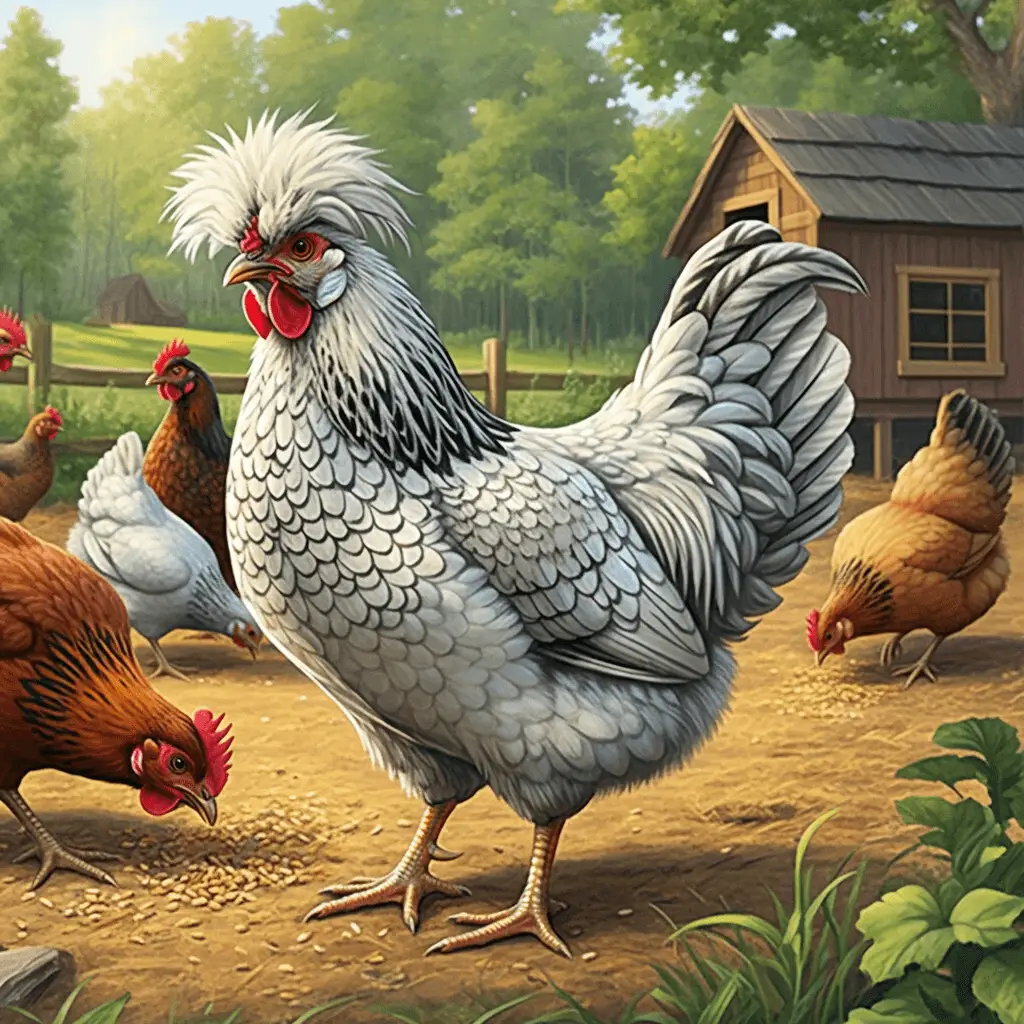If you own a Silver Laced Polish chicken, you already know how enchanting and distinctive they are. From their beautiful, laced plumage to their iconic crest, these birds bring personality and uniqueness to any backyard flock. But what happens when you’re ready to expand your flock or experiment with breeding? This post will explore what you can breed a Silver Laced Polish chicken with, the factors to consider, and why these charming birds are worth the effort.
We’ll give you advice tailored to backyard farmers and homesteaders looking to breed smarter, maintain healthy birds, and maybe even hatch a few surprises along the way.
Why Consider Breeding Silver Laced Polish Chickens?
Silver Laced Polish chickens aren’t just pretty—they’re practical. Known for their unique appearance and calm demeanor, they’re excellent foragers and can easily integrate into diverse flock types.
Breeding your polish chicken can help you:
- Strengthen Desirable Traits—such as temperament, egg production, or decorative plumage.
- Diversify Genetics in Your Flock—mix different breeds for specific needs or aesthetics.
- Build a Sustainable Flock by hatching fresh chicks instead of sourcing new birds every season.
Whether you’re aiming for a show-quality bird, versatile homestead utility, or just a friendly backyard companion, the possibilities are endless!
The Perfect Breeding Partners for a Silver Laced Polish
When pairing your Silver Laced Polish chicken with another breed, your goals matter. Here’s a breakdown of excellent options based on traits and potential outcomes.
1. Polish x Polish (Purebred Polish Chickens)
If you’re looking to preserve the crest feathers and signature laced plumage, breeding within the Polish breed is your best bet. This ensures future generations of purebred Polish chickens maintain the desired aesthetics that make them so unique.
What to Expect
- Appearance: Retains the signature crested head with polished feather patterns.
- Temperament: Friendly and docile, perfect for family and hobby flocks.
2. Polish x Silkie
Why not combine big personalities? Silkies and Polish chickens are both ornamental breeds with great temperaments. The result is birds with fascinating feather textures and curious personalities.
What to Expect
- Appearance: Potential for soft, silken feathering and partial crest development.
- Egg Laying: May inherit moderate egg production.
- Temperament: Exceptionally cuddly and inquisitive.
3. Polish x Ameraucana or Easter Egger
Seek colorful eggs? Breeding Polish chickens with Ameraucanas can combine the Polish’s looks with the Ameraucana’s blue/green egg gene.
What to Expect
- Appearance: Likely to carry a partial crest with fascinating plumage variety.
- Egg Laying: Medium-sized, tinted blue or green eggs.
- Temperament: Hardy, cheerful birds suitable for various climates.
4. Polish x Cochin or Brahma
Want to add size and feathered feet while retaining some ornamental flair? Large breeds like Cochins or Brahmas pair nicely with Polish chickens for fun and functional offspring.
What to Expect
- Appearance: Feathered feet, beautiful plumage, and larger body size.
- Temperament: Calm, friendly, and excellent for cohabiting in mixed flocks.
5. Experiment With Hybrid Crosses
Silver Laced Polish can also mix wonderfully with other hybrids. While the results might vary widely, they provide unique traits and interesting visual outcomes—perfect for those who love experimenting.
Essential Tips for Successful Breeding
Before letting your roosters and hens mingle, ensure you have the right environment and plan in place.
Provide a Healthy Environment
A stress-free, comfortable space for the hens and rooster fosters better fertility. Make sure they have enough room to roam, nutritious feed, and access to clean water.
Select Healthy Birds
Prioritize health and temperament over appearance when choosing breeding pairs. Illness or a poor genetic match can create issues for the future flock.
Observe Compatibility
Roosters of certain breeds may be too large or aggressive for a smaller, docile Polish hen. Keep an eye on interactions and intervene if needed to protect any birds.
Plan for Brooders and Chicks
Hatching chicks requires brooders, chick feed, and a low-draft environment to guarantee survival. Plan before setting eggs to ensure you’re fully prepared.
Benefits of Breeding Silver Laced Polish Chickens
Breeding is far more than hatching chicks—it’s about building something unique and creating a story within your flock. Here are the standout benefits of working with Silver Laced Polish chickens.
- Aesthetic Appeal: Few birds are as impressive-looking as a flock brimming with Polish crosses.
- Diverse Egg Colors when mixing calm Polish pairs with colorful-laying breeds.
- Foraging and Temperament Improved traits for hardier poultry suited for pasture-based setups.
Frequently Asked Questions About Breeding
1. Are Silver Laced Polish chickens good mothers?
Typically, Polish chickens aren’t known for reliability when brooding eggs. A dedicated incubator or surrogate broody hen (like Silkies) is your best bet for hatching eggs.
2. What type of rooster is ideal for Polish hens?
Smaller or medium-sized roosters with gentle personalities (e.g., Cochin, Polish, or Ameraucana roosters) are ideal.
3. How long does it take for Polish chicken eggs to hatch?
Like most chickens, Polish eggs hatch in approximately 21 days. Remember to monitor temperature and humidity during this time.
Start Your Flock Expansion Today
Breeding Silver Laced Polish chickens is as much art as science. With a handful of careful pairings, you can create a flock that not only serves practical purposes but also fills your yard with feathered charm.
Whether you’re experimenting with hybrid crosses or curating a purebred Polish lineage, the results will be as rewarding as they are beautiful.
Take what you’ve learned here, and start planning your next hatch. Do you already have breeding experience with Polish chickens? Share your tips or photos in the comments below—we’d love to see what you’ve created!
